2025-11-28 01:03:47
Icon Composer is Apple’s bespoke application for giving your icons that Liquid Glass flair.
When Apple announced the Liquid Glass updates coming to its OS 26 suite of applications, it also released a bespoke new application, Icon Composer, to developers to help give their icons that Liquid Glass Flair.
The app, free to download from Apple's website, is still very basic, but it has the bones to become a powerful application in the coming years. Apple has really pushed for a consistent app icon experience across its OS 26 releases, so releasing an app that helps developers design icons that fit the liquid glass aesthetic is a great move on Apple's part.
Apple describes Icon Composer as:
“Icon Composer lets you create layered icons out of Liquid Glass from a single design for iPhone, iPad, Mac, and Apple Watch. With a new multi-layer icon format, you can easily adjust Liquid Glass properties, preview with dynamic lighting effects, and annotate across appearance modes. Icon Composer is designed to work seamlessly with Xcode, and also provides the option to export a flattened version of your icon for marketing and communication needs.”

The Icon Composer UI.
The app is not a standalone tool that helps you through the entire design process, as it still requires you to use a separate application to create assets. In my case, I used Sketch to design the individual layers and imported those SVG files into the composer to assemble my icon. But once the layer is imported, it can be adjusted in several ways, including opacity, size, and blend mode. Additionally, you can also adjust how each layer of the icon appears in light, dark, and mono (aka clear) modes to ensure each variant looks picture-perfect. Finally, there's an array of solid/gradient backgrounds to toggle through to help you visualize exactly how your icon looks and adjust the contrast to make sure it really stands out - especially important for clear icons.
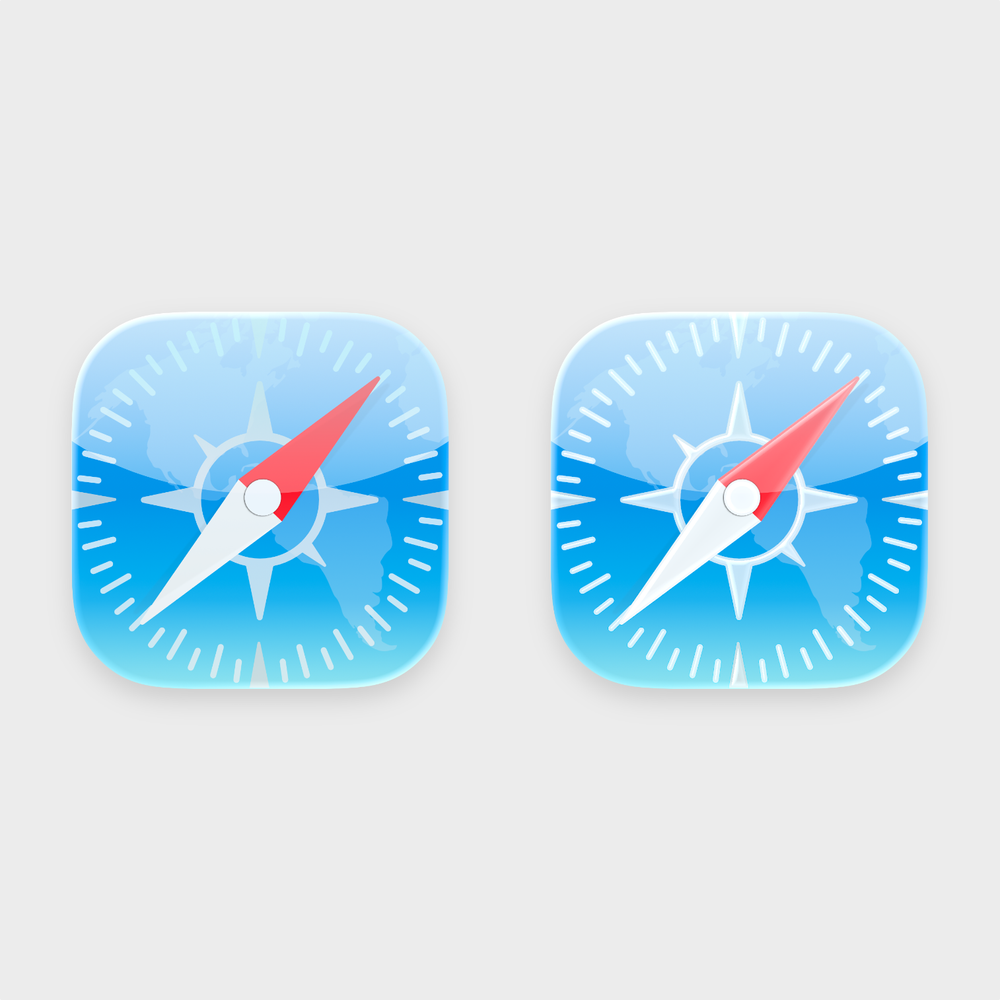
The icon on the left has the Liquid Glass toggle turned off, while the icon the right has Liquid Glass turned on.
And if you were doubting whether you had the chops to create that Liquid Glass look, Apple has made it dead simple. It's literally a single toggle. This is easily my favourite part of Icon Composer, because with one switch, you can turn a flat layer into a dynamic, dimensional piece of glass.
But this is still a very early iteration of the app, and there are many Janky pieces in areas for continuing improvement. Resizing and positioning layers is a hassle, you can’t make any shading/blur effects inside the app, and you can't rename layers once you've imported them. But some of these are minor enough frustrations that can hopefully be ironed out in point releases over the coming months.

If these look familiar, it’s because they are. These three icons from Steve’s iPhone announcement keynote have been fully reimagined with a Liquid Glass finish.
Icon Composer really serves as the final step in the icon design process. It's the perfect lightweight tool for anyone who has already built their images and layers elsewhere, then brings them in to apply the slick Liquid Glass effect and make those final tweaks to colour, opacity, and contrast. It also serves as an final checkpoint to ensure your light and dark variants look just as good as you intended. For novice to intermediate designers who may not know how, or don't want to spend the time manually crafting a Liquid Glass aesthetic, it's a genuinely handy tool.
2025-11-15 01:42:27
Wallpapers crafted to pair perfectly with the spiritual successor of the iPod Socks. Introducing the iPhone Pocket Wallpaper Collection.
“Every once in a while a revolutionary product comes along that changes everything…” - Steve Jobs
Back then, Steve was talking about the iPhone, but couldn’t you argue he might have said the exact same thing about the newly announced iPhone Pocket? Of course not, that would be insane!
On November 11, 2025, Apple announced the iPhone Pocket, a stretchable pouch designed in collaboration with ISSEY MIYAKE (fun fact: the same design house who created Steve's Iconic turtle neck). These $149-249 pouches feature come in a short style, suitable for attaching to a bag or hold, and long style, suitable to be used as a crossbody or swung like a flail.
The short length iPhone Pocket arrives in eight colours: Black, Cinnamon, Lemon, Mandarin, Peacock, Pink, Purple, and Sapphire. It launched in only a few regions including France, Greater China, Italy, Japan, Singapore, South Korea, the UK, and the U.S., yet even with its limited availability it sold out in many markets within the hour.
But for anyone outside those launch markets, anyone who missed the frenzy, or anyone who wants the iPhone Pocket look without handing over $249 for one of these spiritual successors to the iPod Sock, I am excited to share the iPhone Pocket wallpaper collection. Available in all iPhone Pocket Colours for your iPhone. Enjoy!

Cinnamon | Black | Lemon | Mandarin | Peacock | Pink | Purple | Sapphire
I’m a one-person operation, working in healthcare by day & running this site as a passion project in my off time.
If you enjoy what I do, the articles, the wallpapers, or just the overall vibe, consider leaving a tip to support the site. Your generosity helps keep everything I create ad-free and freely available. I’ve also started offering the option to purchase wallpaper packs as another means to support my work when and if you can. Every bit is truly appreciated!
☕️ Tips2025-11-12 22:56:09
Nearly two months in the making, the iPhone 17 Pro and 17 Pro Max Internals Wallpapers are finally here! 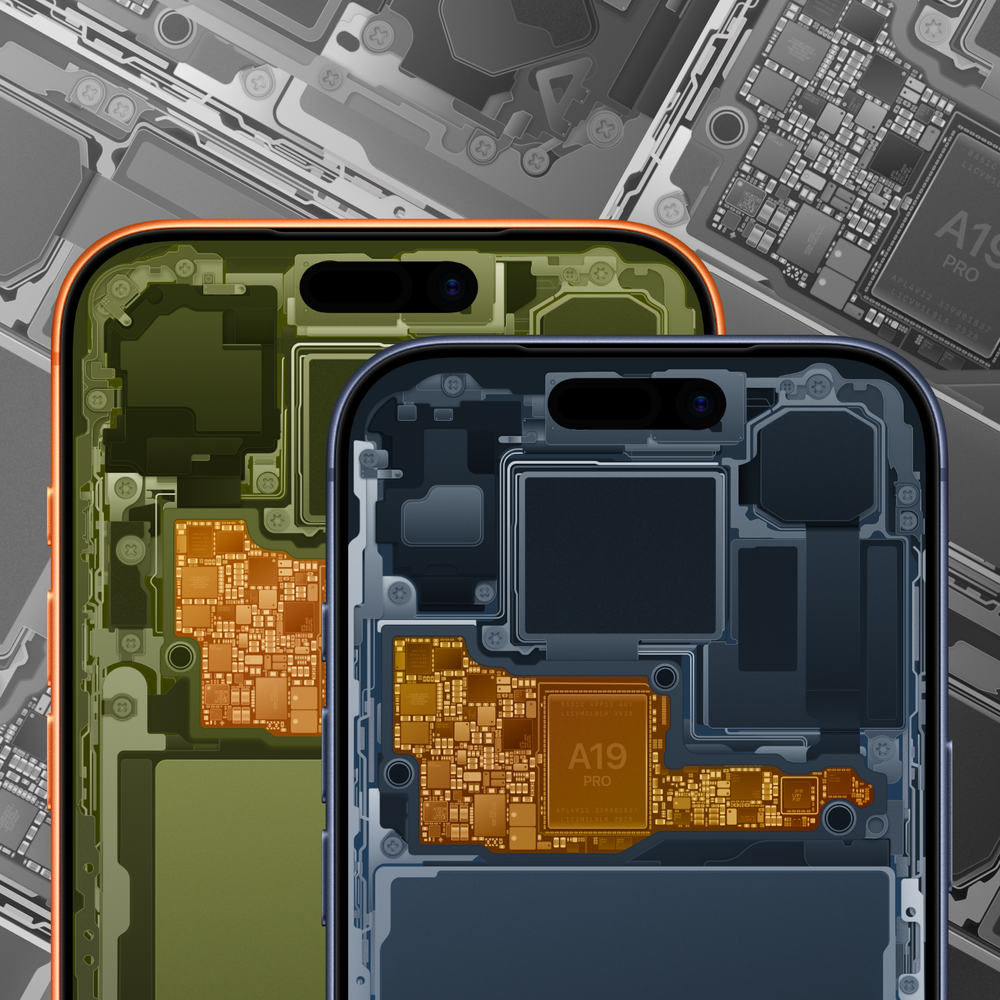
I’m proud to release the internals wallpapers for the iPhone 17 Pro and 17 Pro Max. These wallpapers are an annual labour of love for the Apple community, and I couldn’t be happier with how this year’s collection turned out. It’s the result of months of work, and I’m thrilled to finally share it with you all.
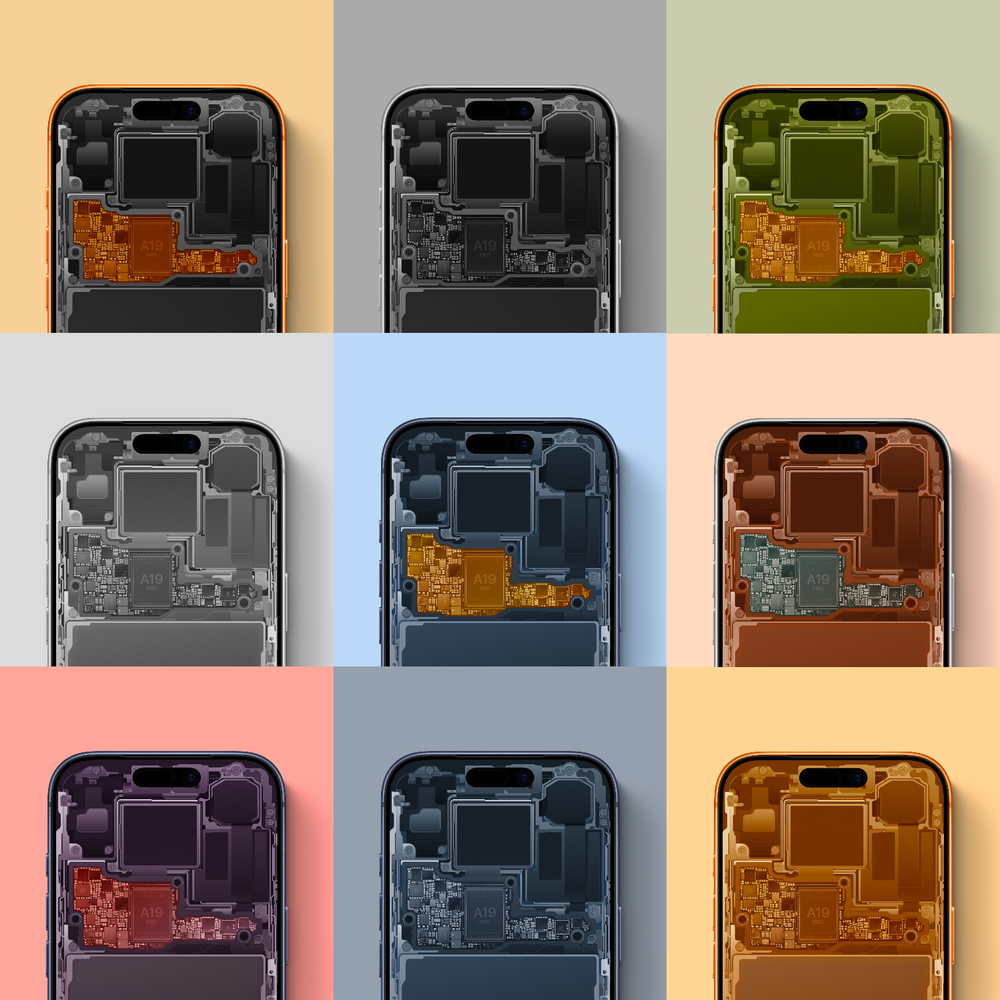
The collection of iPhone 17 Pro wallpapers is available below, free of charge and in full resolution, but if you can support the work I do, I am also making the collection available as a donation gift of $4.99.
The iPhone 17 Pro Internals collection includes nine wallpapers for both the iPhone 17 Pro & 17 Pro Max in the following colours: Aubergine, Chief, Cosmos Orange, Deep Blue (Version 1 & 2), Silver, Space Black (Version 1 & 2), and Terracotta.
Read more about my approach to making wallpapers available for purchase over at The WinRAR Approach.
Once purchased, a download link will be emailed to you to download the .zip file (79.0MB) containing all 18 versions for your iPhone 17 Pro & 17 Pro Max.
The digital download link will expire 24 hours after the first download. If your link expires and you need to redownload the files, please send me an email with your order number and I can send along a new link for you.
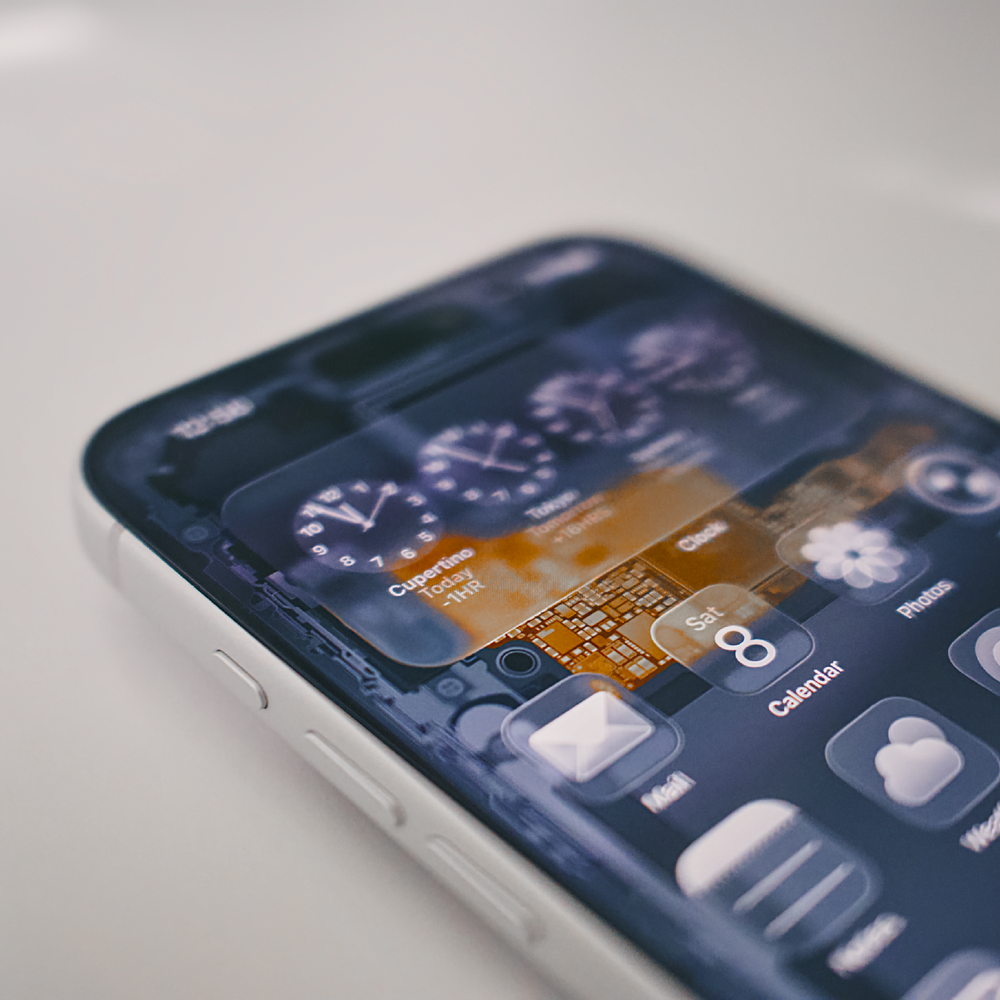
Months in the making, I hope I’ve made something special for the iPhone community.
For the past half decade I have been making annual internals wallpapers for the new iPhone. Starting in 2021 with the iPhone 12 & 13 Pro, I have now released internals for every new Pro iPhone and created internals for the the 13-inch MacBook Air, MacBook Pros, and Apple Studio Display.
In the past, I’ve relied on teardowns from iFixit, MaxTech, and other sources to piece together exactly what the internals of each iPhone looked like. Fortunately, Apple’s Self-Repair program has changed that. From day one, Apple now releases detailed repair manuals showcasing the inner workings of their latest iPhones, nearly eliminating the need to wait for others to crack them open and photograph them. But I still rely on braver folks to take apart the logic boards as these multi-layered components are sealed by Apple and contain the entire brains of these devices. Since 2022, I’ve focused on taking one of these peeled back layers and spotlighting the A-series processor surrounded by all the chips, circuitry, and all the little bits that make these devices tick.
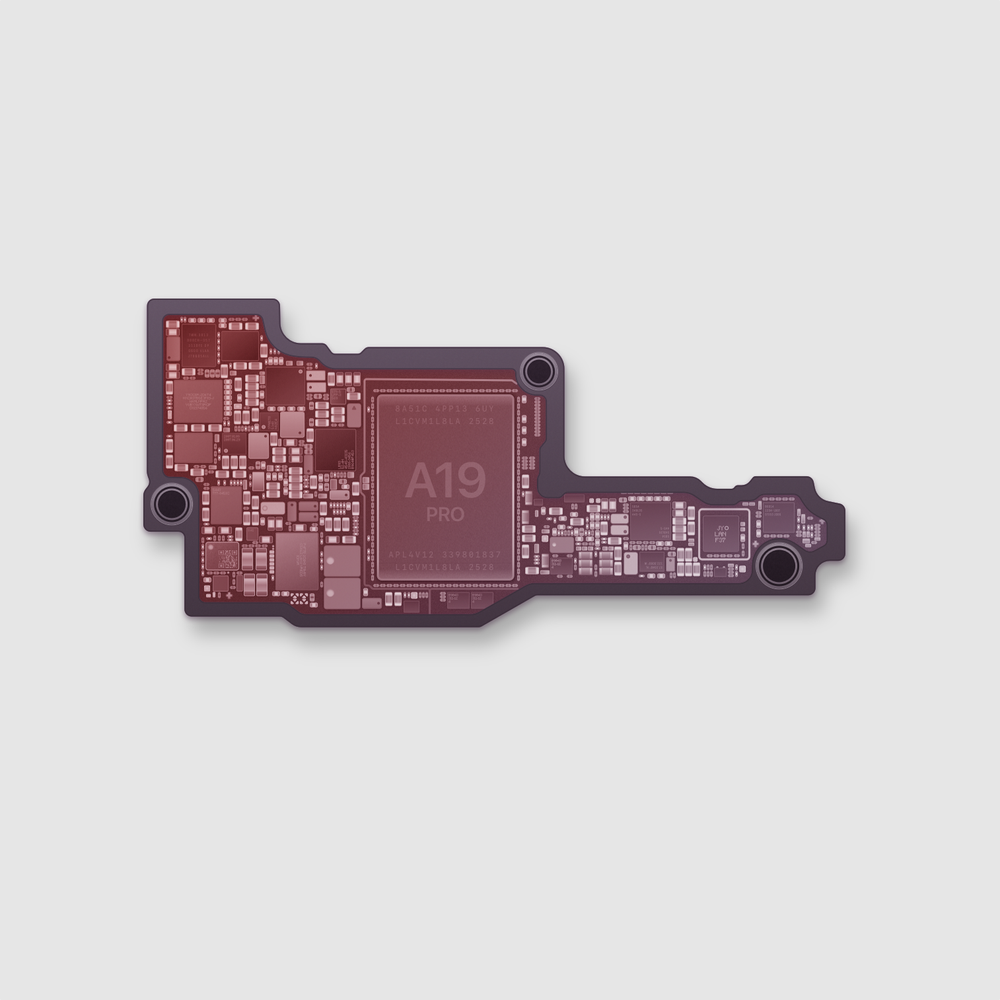
One of the many layers of the Logic Board featuring the A19 Pro chip.
The process takes a considerable amount of time; as each wallpaper requires dozens of hours to complete. I start with an 800×1500 image from Apple’s repair manual and study each detail to understand how the components are arranged, stacked, and connected before recreating them in Sketch to the best of my ability. Every piece is laid out, drawn, curved, layered, and textured by hand. Some elements take only seconds; others, like the perimeter railing, can take close to an hour. It is a constant cycle of adjusting, layering, and tweaking nearly 3,000 layers to ensure they are accurate and that they fit cohesively into the larger design. And once I finish those 3,000 layers for one phone, I open up a new document and start all over again on the second Pro device.
In the past, I’ve tended to make the internals darker and more uniform, but for this iteration, I wanted to do something different. I intentionally brightened certain components to create more contrast throughout the design. As a result, pieces like the screws, railings, and smaller details really pop against the rest of the hardware, giving the final wallpaper a look that’s more dynamic, layered, and visually engaging. At the same time, as intricate as these wallpaper are, the wallpaper still feels clean and balanced rather than unnecessarily distracting or overwhelming.

Comparing the iPhone 16 Pro to the new iPhone 17 Pro internals.
Also this year, I’m lucky to have Apple’s new Liquid Glass design language in iOS 26 on my side. The glossy, refractive UI elements really complement these wallpapers, adding a new sense of depth and realism to the design. You can actually see the internals refracted through the clear icons, and when you unlock your phone, the lock screen subtly refracts and warps the components beneath your finger - it’s super cool!

Liquid Glass & iOS 26 really elevates this year’s iPhone 17 Internals wallpapers.
Finally, once all 2,703 layers for the iPhone 17 Pro and 2,843 for the iPhone 17 Pro Max were complete, I moved the projects into Pixelmator Pro to begin the colouring process. Each layer group receives its own colour treatment, and I break the design into several sections and colour grade them individually to create the finished project.
After all that, here are the finished iPhone 17 Pro & 17 Pro Max Internals wallpapers. If you can, please consider supporting the site with a tip or by purchasing the collection. As a solo creator, this support helps me immensely and contributes to me keeping the site ad-free and the work accessible without any barriers and paywalls. Enjoy!
Tips Purchase
Aubergine: iPhone 17 Pro | iPhone 17 Pro Max
Chief: iPhone 17 Pro | iPhone 17 Pro Max
Cosmos Orange: iPhone 17 Pro | iPhone 17 Pro Max
Blue (V. 1): iPhone 17 Pro | iPhone 17 Pro Max
Blue (V. 2): iPhone 17 Pro | iPhone 17 Pro Max
Silver: iPhone 17 Pro | iPhone 17 Pro Max
Space Black (V. 1): iPhone 17 Pro | iPhone 17 Pro Max
Space Black (V. 2): iPhone 17 Pro | iPhone 17 Pro Max
Terracotta: iPhone 17 Pro | iPhone 17 Pro Max
Right now, the plan is to start work on the iPhone Air internals wallpaper, aiming for an early December 2025 release. I’m still on the fence about doing one for the iPhone 17—it’s tough to know if the time and effort will really pay off. Still weighing my options…
iPhone 12 Pros (2021)
iPhone 13 Pros (2021)
iPhone 14 Pros (2022)
iPhone 14 & 14 Plus (2022)
iPhone 15 Pros (2023)
iPhone 16 Pros (2024)
Apple Studio Display (2022)
13-inch MacBook Air (2025)
MacBook Pro (14 & 16-inch; 2025)
2025-10-28 10:19:24
At 39,000 feet, Apple’s latest noise-cancelling earbuds expose an issue you’d never notice on the ground.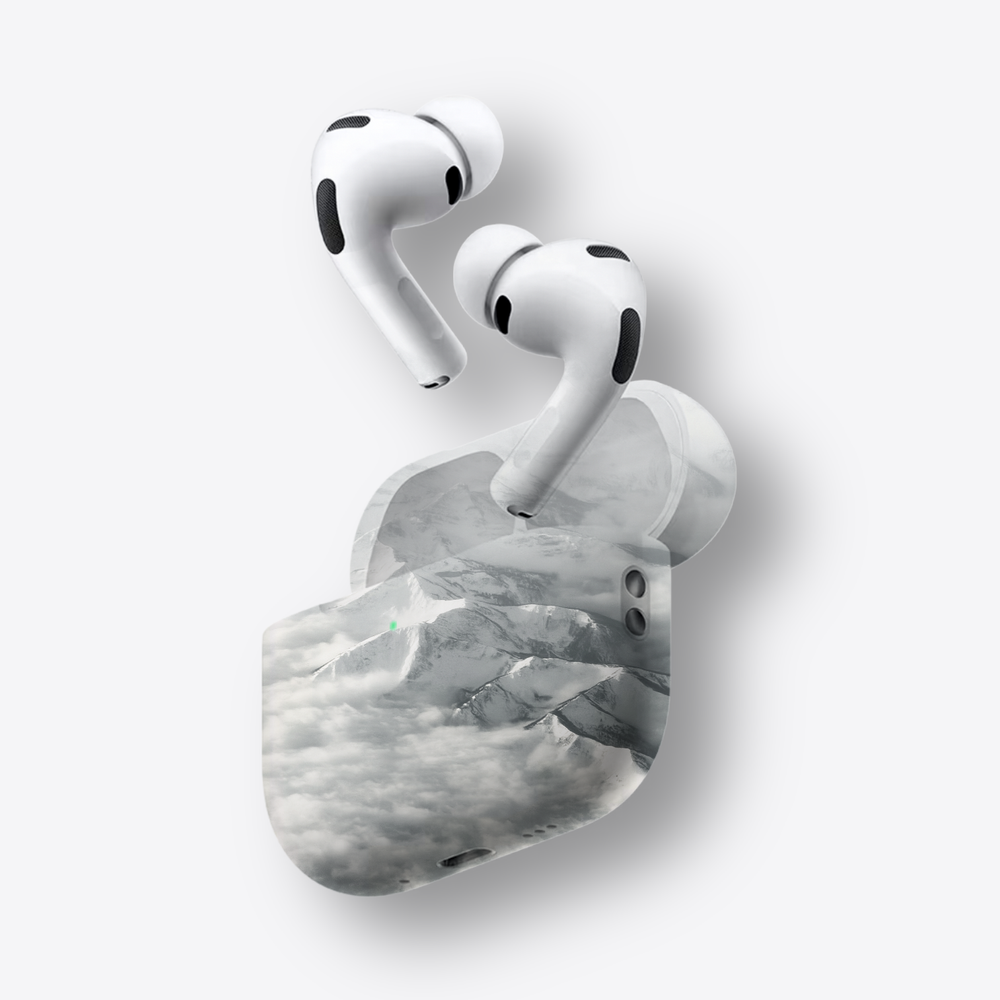
With incredible noise cancelling, a range of remarkable hearing health features, terrific sound quality and great battery life, the AirPods Pro have long been my goto pair of headphones from Apple. So when Apple announced the AirPods Pro 3 at their September event, I was ecstatic! Apple touted that the AirPods Pro 3 featured even better noise cancellation, fit, and sound quality over its predecessor, and added additional health features with the addition of heart rate monitoring.
Serendipitously, I happened to be boarding a flight the night of their release, and what better way to stress-test the new AirPods Pro 3 than with a transatlantic flight? Air travel is where the AirPods Pro have really shone; their compact size, noise-cancellation, comfort, battery life, and sound quality make them a perfect package for the noisy, cramped cabins of economy class.
Prior to the flight, I measured my fit and wore them around the house for an hour; everything seemed great. I will add that these new foam tips do take some getting used to, as they feel noticeably dense, and I’ve seen some bloggers and podcasters say the new fit is less comfortable compared to the Pro 2's softer silicone. Personally, I don’t share this complaint.
My trouble came at 39,000 feet when I first noticed a high-pitched whine coming from my left AirPod. The issue was that the AirPod’s ear seal kept loosening, leading to a noise-cancellation feedback loop and a painfully loud piercing screech from the AirPod. Attempts to readjust worsened the feedback, especially if I accidentally covered the external microphone with my finger. This happened multiple times, making the experience so unpleasant that I eventually switched to my spare EarPods for the remainder of the flight. While disappointed, I wasn’t ready to condemn the headphones yet; perhaps the medium seal worked fine on terra firma, but on flights, I might need a different size for a better seal.
After landing, I tested the tips and switched from a Medium to Extra Small (Apple offers XXS, XS, S, M, or L tips for AirPods Pro 3). Both XS and M tips sealed well and were comfortable for long wear. For weeks, I couldn’t reproduce the whistling feedback, and I forgot about it until my next flight earlier this week.
Once again, it was only a few minutes after takeoff that the painful screech returned. Careful adjustments or yawning would fix the issue, but only for a couple of minutes at most. I figured that the new foam tips were trapping more heat, reducing airflow and ventilation, and less flexible, and that somehow all that was playing a role in loosening the seal. And when paired with the aircraft’s loud, steady hum, a feedback loop was created. But day to day, this is a non-issue because I never encounter the same types of pressure changes and noises that would reproduce this issue.
While researching this, I did happen upon a thread on Reddit which confirmed that others have reported a similar issue, principally with the left AirPod on flights, just like I tried to describe above:
“I also heard the whistling noise recently in the plane. The issue would go away for me as soon as I yawn, but after a while it would start making the whistling noise again. I noticed during ascent and descent it would get worse.”
“I have this issue too. Completely fine in normal life but awful on a plane.”
“Also having this issue on flight. It’s like a vibrating or swooshing noise. Definitely the ANC as it reduces when you turn on adaptive and none with transparency.”
So what’s going on? No idea. Apple hasn’t announced any recall or acknowledged the issue to date, and the few Reddit reports show that support calls that led to replacements returned pods that reproduced the issue. So either there are a few of us with stupidity-shaped left ears, the AirPods are glitching in some way, or something is happening on flights that the AirPods Pro 3 can't handle.
I love the AirPods Pro 3, but with a denser fit that risks making them uncomfortable for some users and now this painful flight feedback issue, the AirPods Pro 3 aren’t as easy to recommend as the previous AirPods Pro 2. I can’t speak to how widespread this issue is, but my buying advice would be that if you are hoping to buy them, to do so close to your next flight and within the return window, so you can test them in the air and ensure you don’t run into the same painful feedback problem. Hopefully this is just a quirk with my ears or fit, because it’s hard to excuse a product that becomes not only unusable but downright painful to wear on a flight.
This entry blew up a little bit. My post on social media got more engagement than any previous blog entry, and shortly thereafter a bunch of podcasts, including The CultCast & The MacRumors Show, released episodes discussing this issue. I'm not suggesting I'm the cause, as forums and reddit posts had highlighted this issue before hand, but I'm happy that this post seemed to help catalyze awareness of this issue to some degree.
Since that post, I’ve continued wearing my AirPods Pro 3 around town without any problems. The only time things got unbearable was when a fire engine with its sirens blaring passed right by because it seemed like the AirPods tried to cancel the noise but instead added an even more deafening layer of noise to the situation.
Many people in my social media post reported that they also experienced the issue. Daniel from @ZONEofTECH wrote: "Can confirm that I’ve had the same issue..." while Josh (@joshjkale) shared: "So happy you shared bc I experience this exact same issue with the left AirPod on a flight this week. Starting to wonder if it’s a legitimate manufacturing flaw." Jenna Ezarik (@jennaezarik) also confirmed that she's experienced this issue as well: "Ugh this happened to me during a flight and I haven’t worn them since because it hurt so bad!!?????" However, not everyone experiences the issue, with many also chiming in and reporting that things with the Pro 3s addressed issues they had with other pairs of AirPods, and that they'd been on numerous flights without incident.
I've also gotten suggestions to try different sized tips, upgrade my seating from economy (or at least sit further from the engine), try third party tips, or just turn off ANC. According to comments, the fourth option, turning off ANC, seems to end the whistling/screech in flight, so if you own/want to own a pair of AirPods Pro 3, know that this option exists if you detect this mid-flight.
Me, I'll be going to the Apple Store soon to see whether or not I can get a replacement through AppleCare. Although comments made it seem that this doesn't address the issue, hopefully it puts the concern more on Apple's radar. And if anyone wants to donate a flight for me to test them out again, you know how to reach me.
This entry was written at 33,000 feet while flying over the Canadian Rockies.
2025-10-06 08:46:08
Sunset in London taken on September 28 from Sky Garden. Taken with the iPhone 16 Pro Max (Main Camera — ISO 200, 24mm, -0.5ev ƒ1.78, 1/165 s)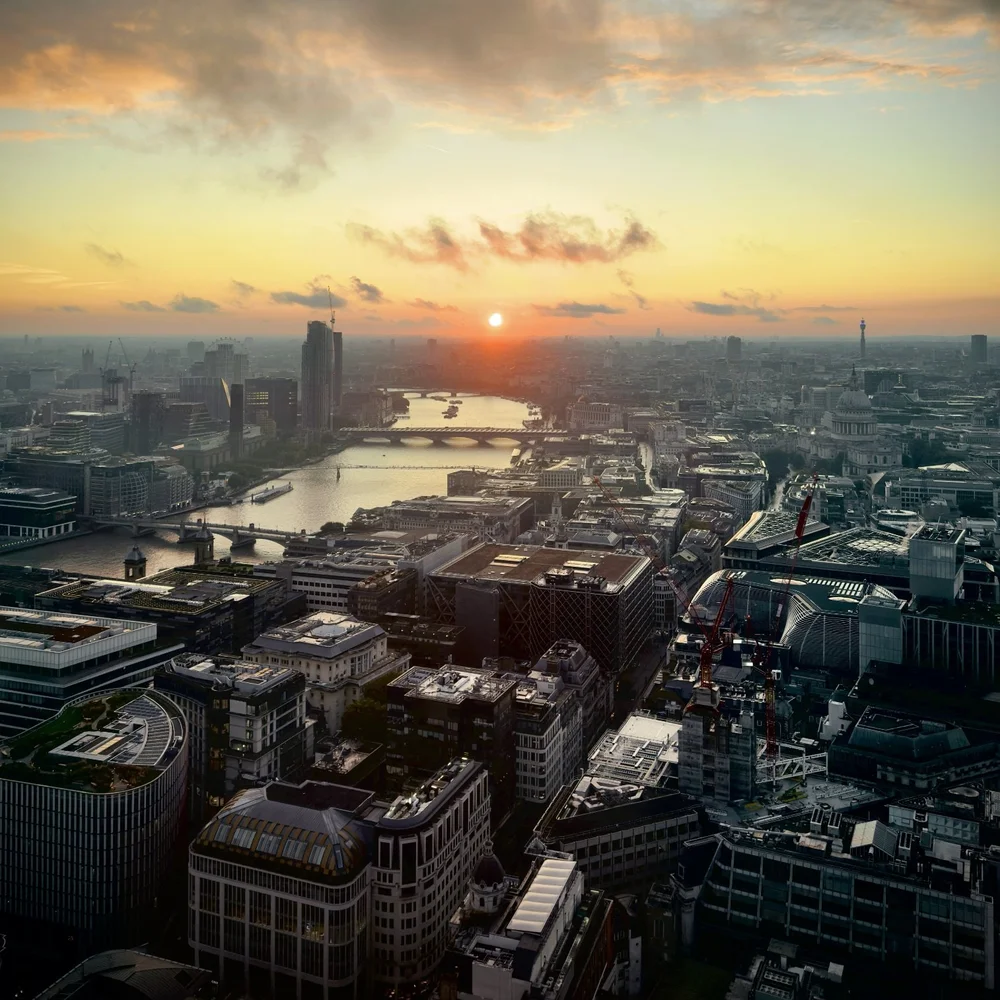
For two weeks in the second half of September, I was in Belgium/UK, a once-postponed, long-awaited, and sorely needed trip away from everything.
In preparation for the trip, I needed a few tech accessories, and I wanted to share the collection of items I purchased to help make this trip a success. And along the way, I might slip in a few photos of my travels, just because. Nothing here is sponsored or affiliate-linked; these are simply products I used and really liked.
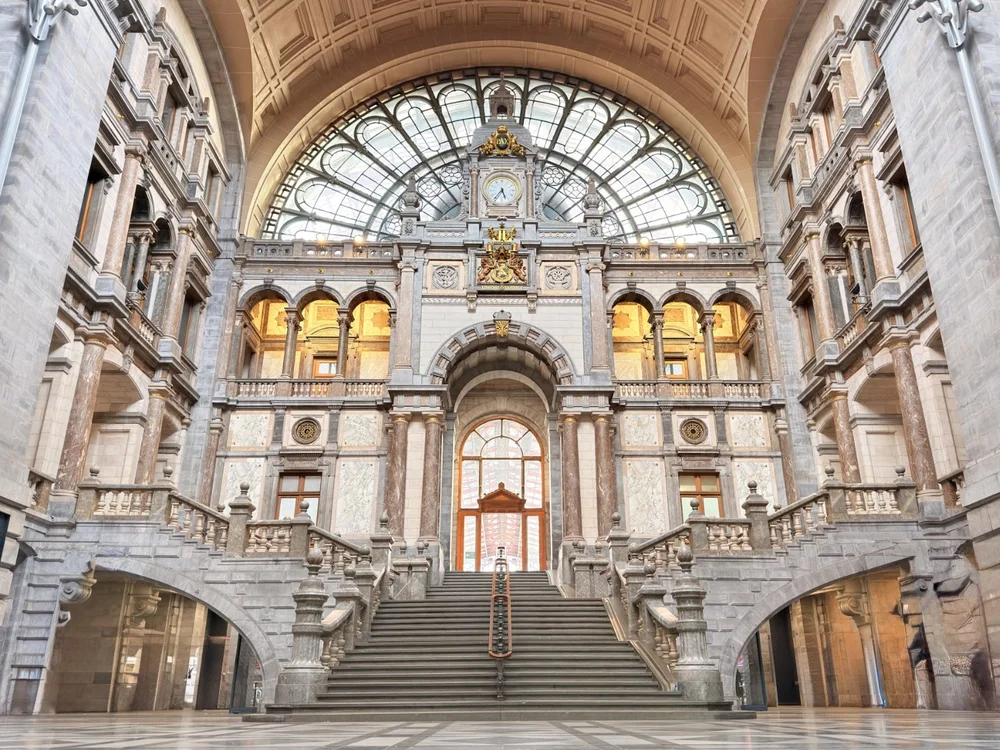
Antwerpen-Centraal railway station. Shot on iPhone 16 Pro Max (Main Camera— ISO 160, 24mm, 0 ev, ƒ1.78, 1/50 s)
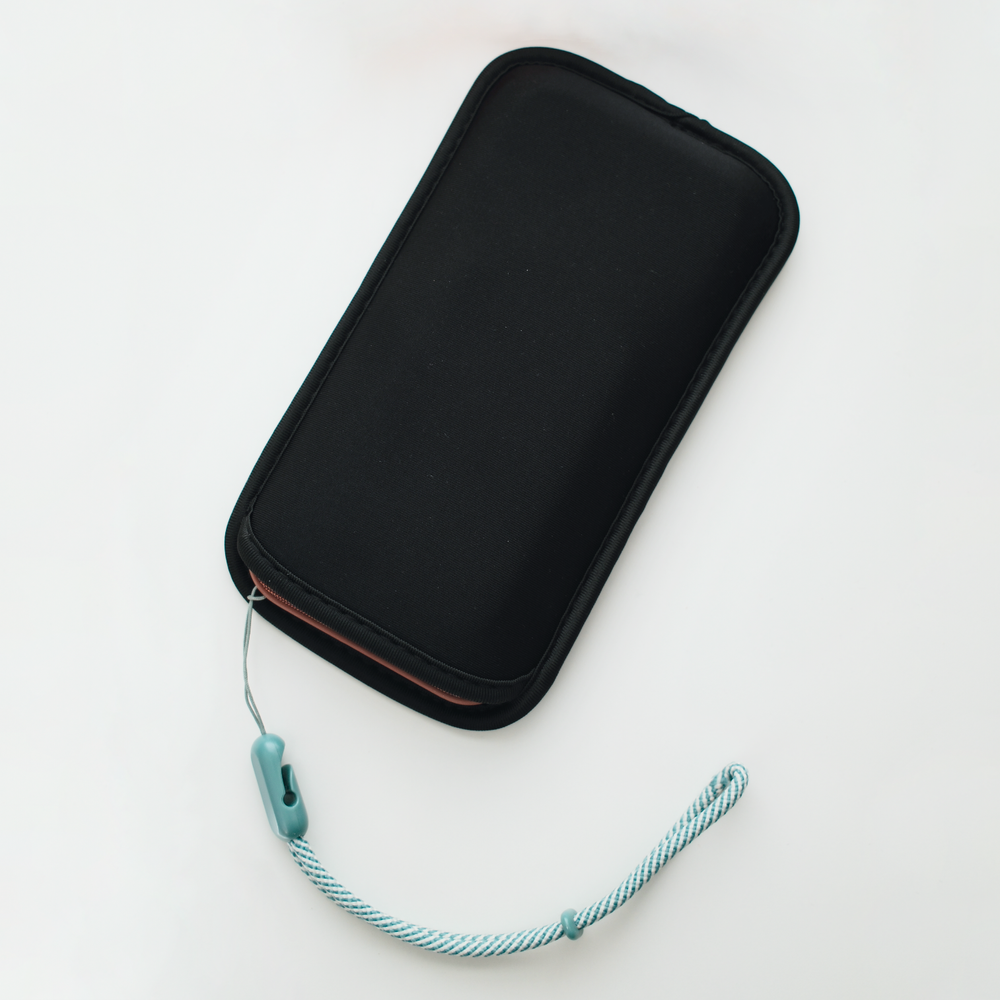
Online, we often have the great case vs. caseless debate, but however you choose to carry your devices (this blog proudly endorses a case-donned lifestyle), I'd still recommend getting something extra like a neoprene sleeve while travelling. The sleeve adds an extra layer of protection when you're in cramped spaces (think economy seating on a flight), and I felt it helped protect the screen a bit more, taking the device in/out of my bag/pants more regularly while out and about.
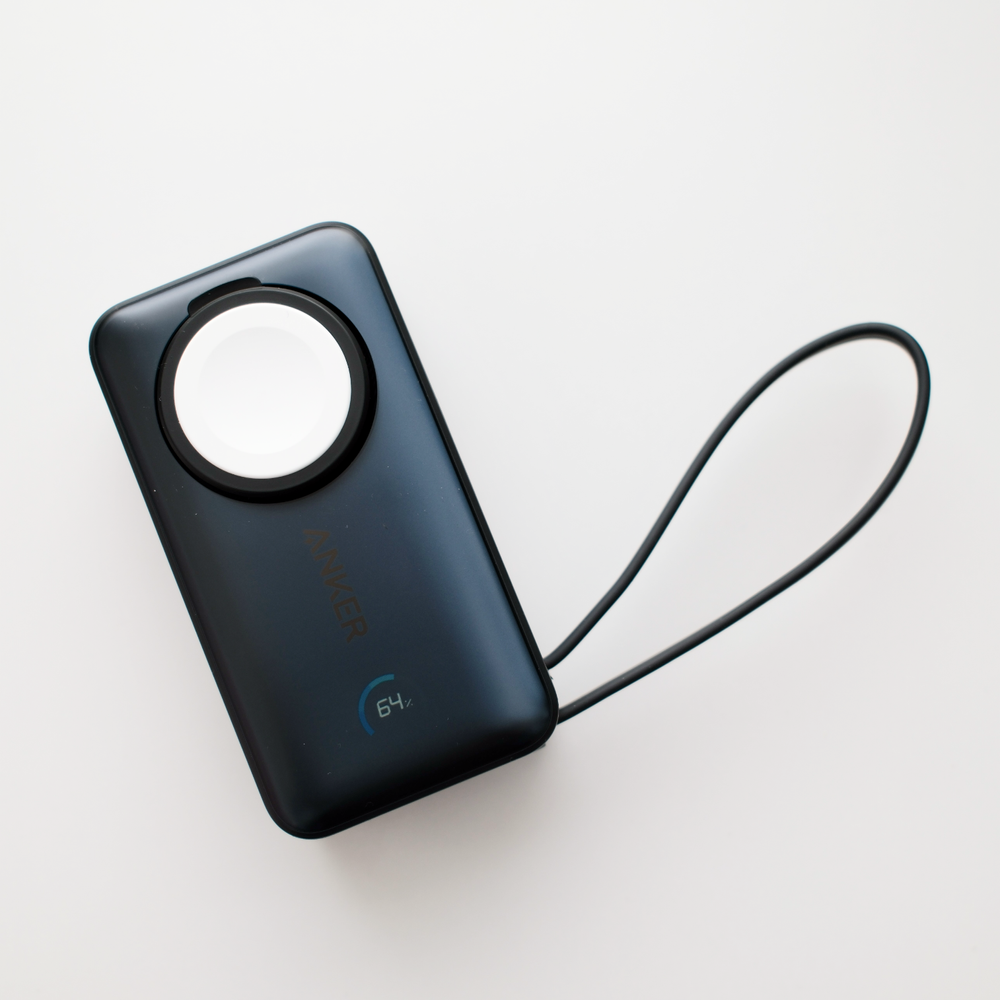
Charge two devices via USB-C and an Apple Watch simultaneously with this compact 10,000 mAh travel charger.
This device was an absolute game-changer on my most recent trip. I'd previously used the Apple MagSafe Battery, but this time I wanted something that could also charge my phone, charge quickly, and top up my camera if needed.
The Anker MagGo was the perfect product. It's a 10,000 mAh battery pack that weighs only 245 g, measures 95 × 51 × 32.4 mm, features a built-in cable, and displays the current capacity and charging speed to connected devices. And on that last point, it can charge three different devices: a device connected to the integrated USB-C cable, a second device connected via another USB-C cable (up to 30W), and any Apple Watch or any recent pair of AirPods (at 5W) via the Apple Watch Wireless Charger.

Camden Market as seen from the Grand Union Canal. Taken with the iPhone 16 Pro Max (Main Camera — ISO 64, 24 mm, 0 ev, ƒ1.78, 1/2347 s)
Since I was taking hundreds of photos, I needed an extra bit of juice towards the evening, and it was great to stop for a bite to eat (or a beer, or both), plug in mine and my wife's iPhones, dock my Apple Watch, and have 40+% of the battery replenished by the time the bill arrived.
Cannot recommend this product enough. It might not be the largest capacity power bank, but if you want the assurance of a little extra juice without adding bulk to your travel essentials, this is the one!
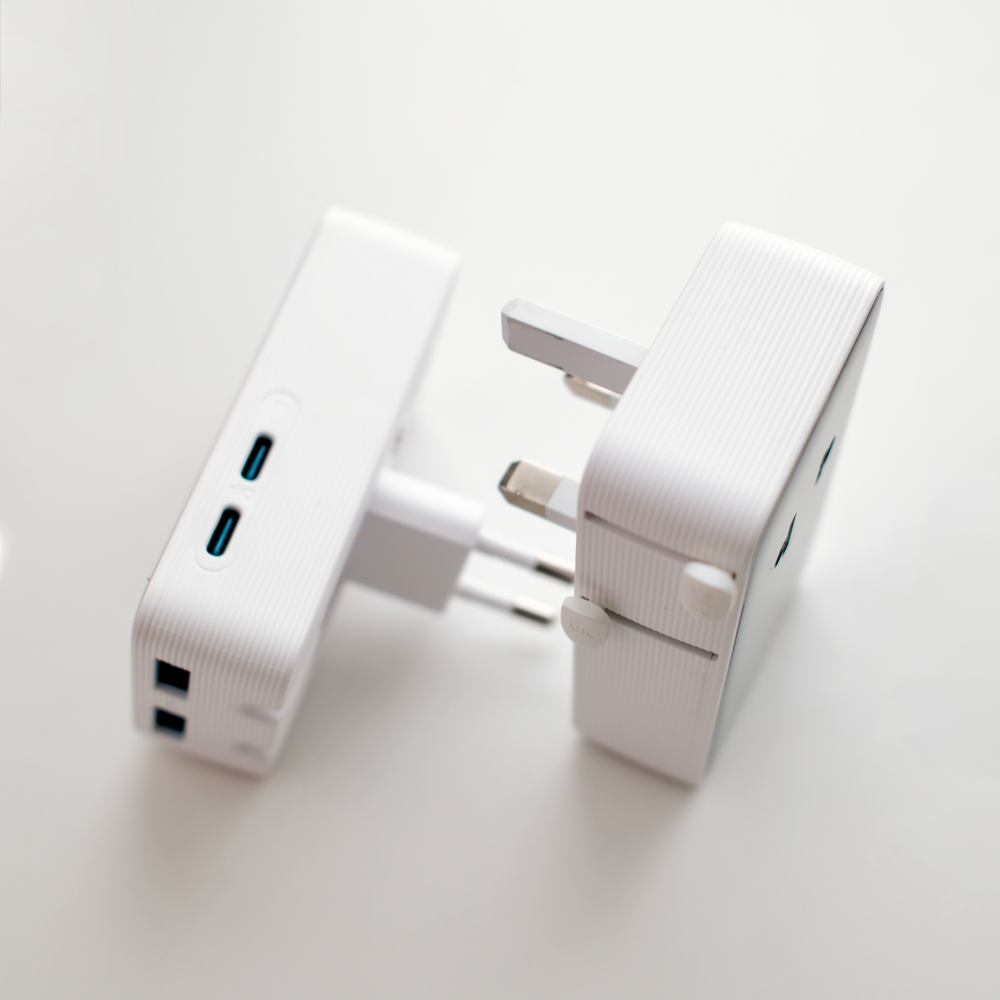
A portable travel adapter that works in over 200 countries.
Knowing I'd be visiting two countries that use entirely different plug types than North America, I had to figure out what adapters I'd need for my iPhone, iPad, camera, and everything else. I considered buying Apple's interchangeable plug set for my chargers, but two sets would cost nearly $100, take up extra space, and I'd almost certainly end up missing pieces by the end of the trip.
The Anker Travel Adapter is a very compact (86 × 50 × 25 mm), wall-mounted block designed to work seamlessly with multiple plug types worldwide. It supports Type A (used in the United States, Canada, Mexico, & Japan), Type C (common across Europe, Africa, South America, & much of Asia), Type G (found in the United Kingdom, Ireland, Malta, Malaysia, Singapore, & throughout the Arabian Peninsula), Type I (used in Australia, New Zealand, China, and Argentina), and is compatble with Type E, F, J, K, L, N, & O recepticles as well. To access any plug, toggle the switch to extend or retract the desired plug, plug it in, and you gain access to two USB-C ports, two USB-A ports, and an AC outlet.They won't charge things very quickly (the maximum output is 12W for the USB-A ports and 20W for the USB-C ports), but it will recharge your devices overnight without issue.

The Belgian city of Bruges as seen from atop the Belfry. Taken with the iPhone 16 Pro Max (Telephoto Camera — ISO 50, 120 mm, 0 ev, ƒ2.8, 1/1916 s).
Between my camera, iPhone, iPad, MacBook, battery pack, Apple Watch, and AirPods, I had no shortage of gadgets to keep powered up. This compact charger (I actually grabbed two) kept everything charged hassle-free throughout the trip. With another trip to Asia on the horizon, having a single travel adapter that covers every plug type I'll need feels like a total game-changer.

The lanyard adds a little extra peace of mind when I’m traveling.
I add a wrist strap to my iPhone anytime I travel. The first reason is that since I am using my iPhone more often to check maps and take photos, I wanted an extra bit of safety in case I lose my grip. The second reason was security. Before the trip, I saw plenty of travel videos warning about the prevalence of phone theft in London (apparently one phone every 7½ minutes), but with a city that big, what were the chances? It wasn't until I saw a poor lady have her phone yanked out of her hand in front of me by a gang of three cyclists that it made sense why so many people had encouraged gripping your phone tightly or having it secured. No particular recommendation, I just got a cheap but highly rated pair of lanyards from Amazon and it's worked out fine.
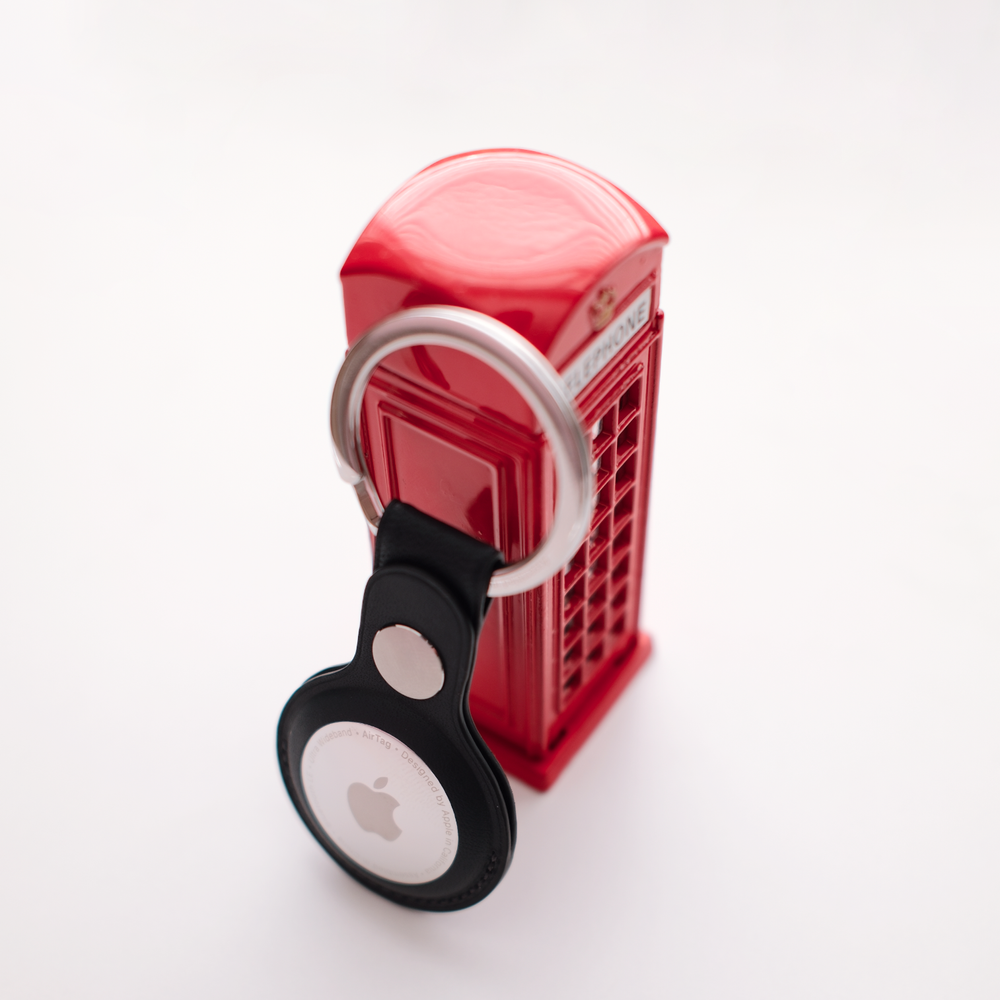
It never hurts to toss an AirTag into your luggage so you can keep tabs on it throughout your trip.
I always make sure to bury one of these inside both my luggage and whatever carry I am taking throughout the day. Gives me a bit of peace of mind knowing I have some way of keeping tabs on my belongings.

AirPods Pro are a must for travel: tiny, great sounding, with best-in-class ANC & Transparency.
I love AirPods Max for their look & ANC, but the best set of headphones, and also the best set of travel headphones, are the AirPods Pro. Their compact form factor, best-in-class ANC, and transparency mode, along with their solid battery, make AirPods Pro a top travel accessory for any trip.

Keep your devices pristine with a travel size cleaning solution.
With more use comes more grim, and it's nice to go home at the end of a long travel day and give your devices a clean. I've used WHOOSH! Cleaning Cloths and sprays for over a decade, and they're my go-to products for all my Apple products and electronics. At home, I keep the large 1-litre bottles on hand, but when I travel, I pack their tiny 8ml spray and tiny cleaning cloth. It's small enough to fit anywhere and lasts easily for a couple of weeks on the road.

Brussels, Belgium as shot from the top of Mont des Arts. Taken with the iPhone 16 Pro Max (Telephoto Camera — ISO 50, 120 mm, 0 ev, ƒ2.8, 1/860 s)
All in all, these small accessories ended up making a big difference in keeping my trip running smoothly. Each solved a real problem, from keeping my iPhone powered to helping me travel a little lighter and worry-free. If you're planning your own trip abroad, hopefully a few of these picks make their way into your carry-on too.
2025-09-13 04:59:25
A-Series Inside is here! Dress up your device with these stunning holographic vinyl stickers.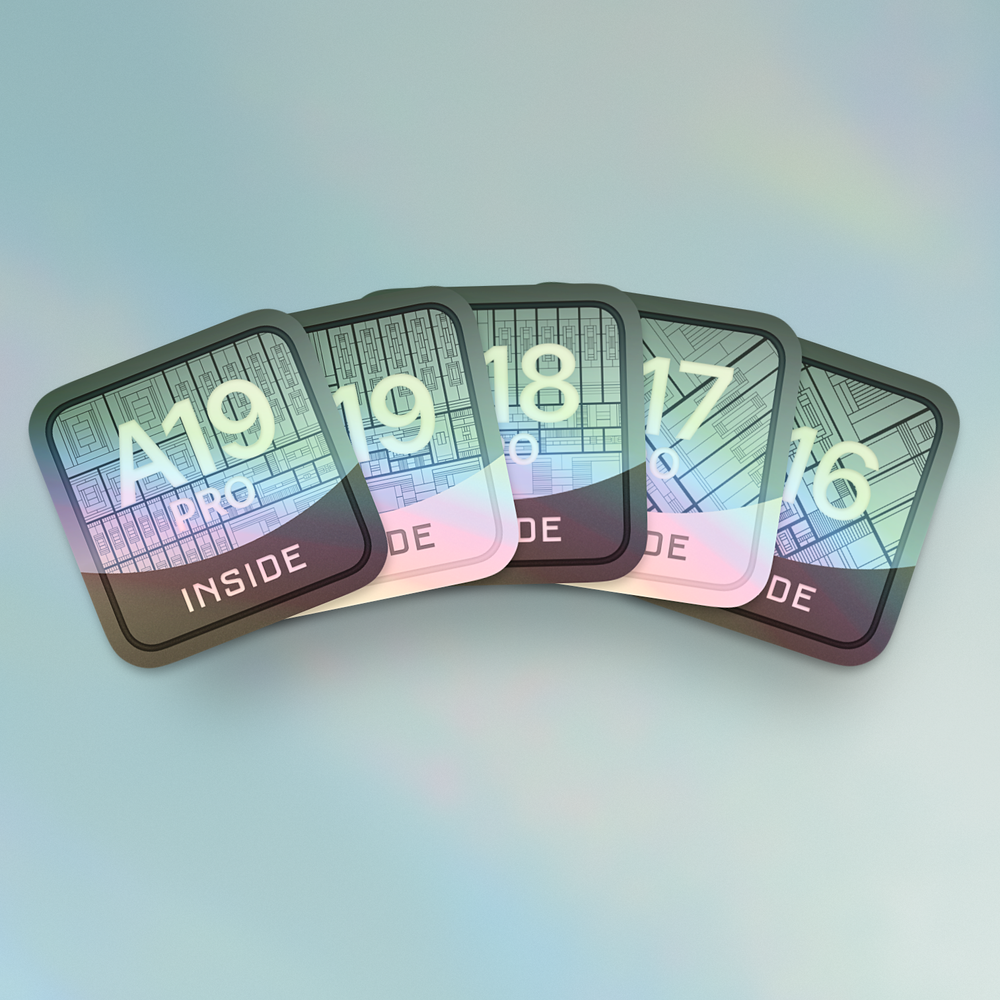
Back in February, I launched the Silicon Inside Sticker collection, a lineup of holographic vinyl stickers celebrating every M-Series chip. They were a playful, tongue-in-cheek nod to the classic "Intel Inside" stickers of the past, those little badges that once announced what processor lived inside your laptop.
Of course, plenty of people groaned ("Apple would never…"), and they're right, which was precisely the point. But for every eye roll, there were just as many fans who loved the idea and wanted to adorn their Macs with Apple Silicon pride. I received dozens of photos of people proudly displaying their M-series stickers on all their various Apple devices.
And over the following months, the collection continued to grow steadily. I introduced a complementary Silver series alongside the original Space Black, added newly announced chips like the M3 Ultra, played with limited-edition colours such as the Sky Blue M4, and even released a cheeky M4 Extreme set for April Fools' Day.
The response to these stickers has far exceeded my expectations. Orders have come in from nearly 60 countries worldwide. Through the early spring, I was kept busy scaling up operations: stocking supplies, refining packaging, and working nonstop to get stickers into people's hands as quickly as possible.
And while I wait for Apple to release the M5 and beyond, I have been working on a collection of stickers for the A-Series chips. Each of these stickers features a unique chip diagram faithfully representing each A-Series chip, from the A15 (used in the iPhone 13, iPhone 14, iPad mini 6th generation, and Apple TV 4K) to the recently released A19 & 19 Pro chips, a total of seven chip variations in all! And unlike the rectangular M-Series stickers, these are square, measuring 1.01 inches x 1.01 inches. Every chip is available in Silver or Space Black! Enjoy & thanks for your support.
Purchase below or view my entire merch collection over at the Mercantile.
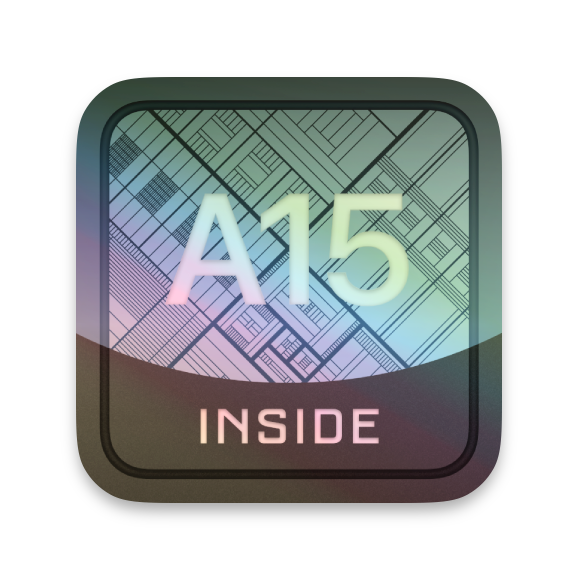
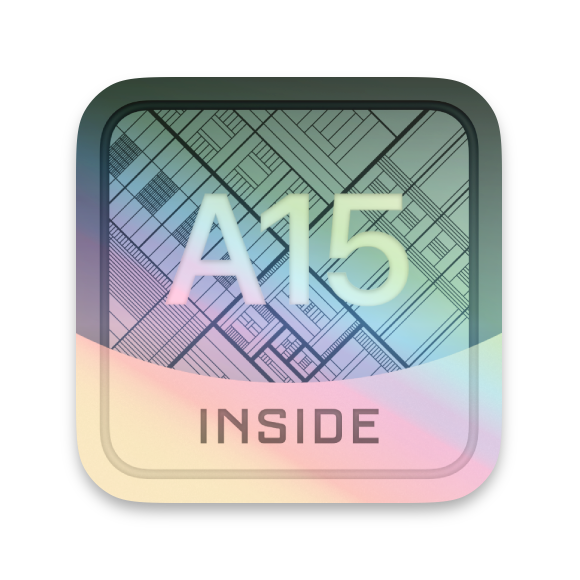
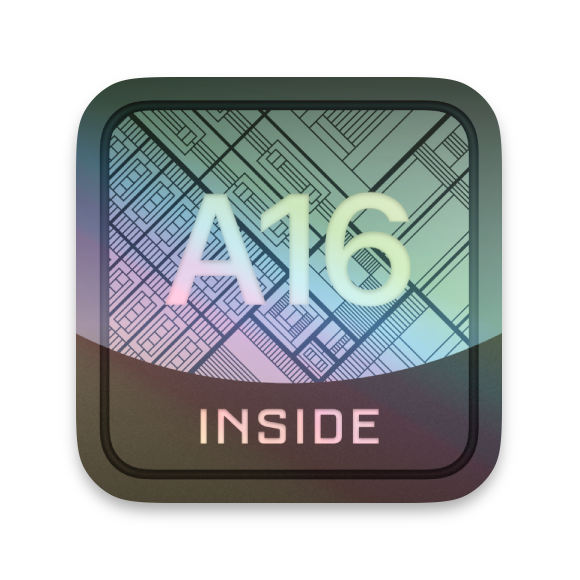



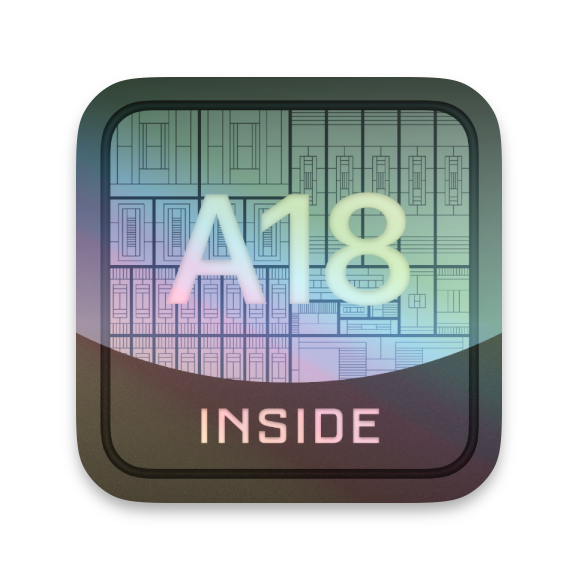
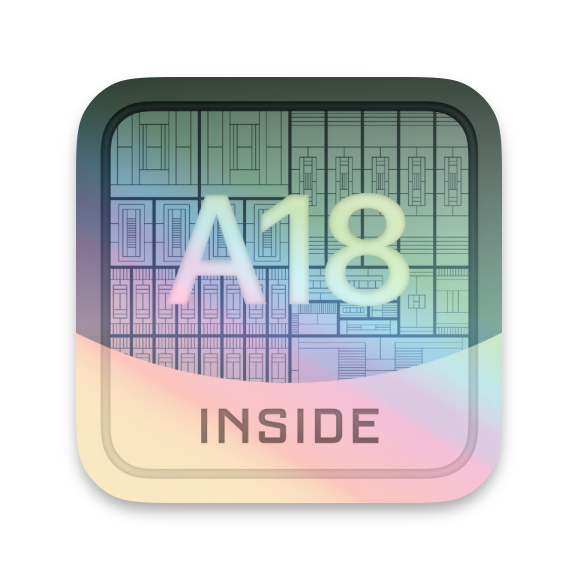


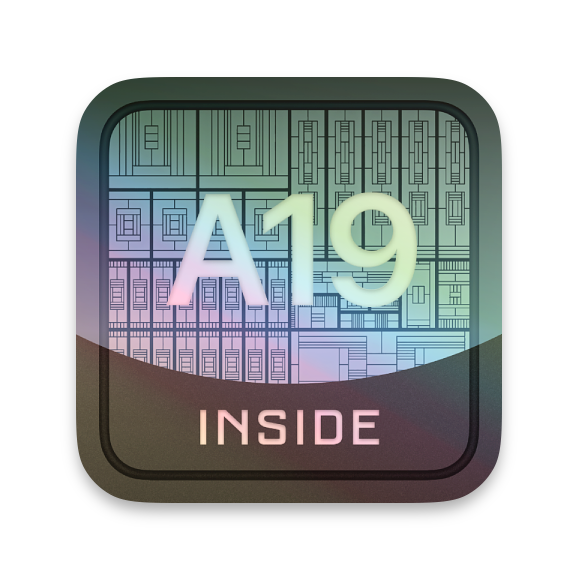


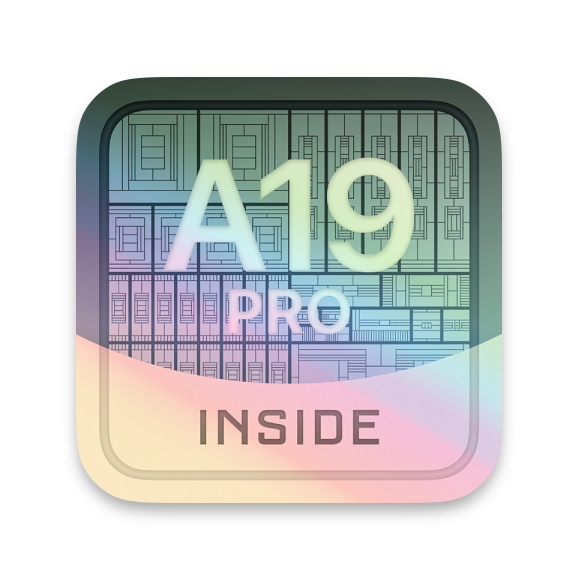
 CA$5.00
CA$5.00
A15: iPhone 13, iPhone 13 mini, iPhone 13 Pro, iPhone 13 Pro Max, iPhone 14, iPhone 14 Plus, iPad mini (6th Generation), Apple TV 4K (3rd generation)
A16: iPhone 14 Pro, iPhone 14 Pro Max, iPhone 15, iPhone 15 Plus, iPad (A16)
A17 Pro: iPhone 15 Pro, iPhone 15 Pro Max
A18: iPhone 16, iPhone 16 Plus, iPhone 16e
A18 Pro: iPhone 16 Pro, iPhone 16 Pro Max
A19: iPhone 17
A19 Pro: iPhone Air, iPhone 17 Pro, iPhone 17 Pro Max
Note: Affixing a sticker to your iOS device does not enhance its performance to the performance levels indicated by the sticker.
Each sticker is slipped into a protective plastic sleeve, and every order is inspected and carefully packaged before heading out within 1–3 business days. To keep things simple and accessible worldwide, orders are shipped via standard lettermail. While tracking isn’t available with this method, most deliveries arrive within 3–6 weeks, depending on your location.
If something feels off or your order doesn’t arrive, just send me an email (along with your order number) and I’ll work with you directly to make it right.
For more details, check the Order Status Page.
According to the manufacturer, these vinyl stickers are safe to use on laptops. They are made from premium vinyl, designed to be durable and weatherproof, and can be removed cleanly without leaving residue.
Canada Post has currently (as of June 13, 2025) suspended service to the following regions: Belarus, Haiti, Israel, Iran, Korea North Dem Rep, Libya, Russia, Somalia, Sudan, Syria, West Bank and Gaza Strip, Yemen.